Our Bins
We collect your general waste from the kerbside weekly, and your recycling and garden organics fortnightly (on alternate weeks). We provide domestic kerbside collection services to approximately 60,000 residential properties, and of these, around 22% are medium to high density housing.
General waste bin
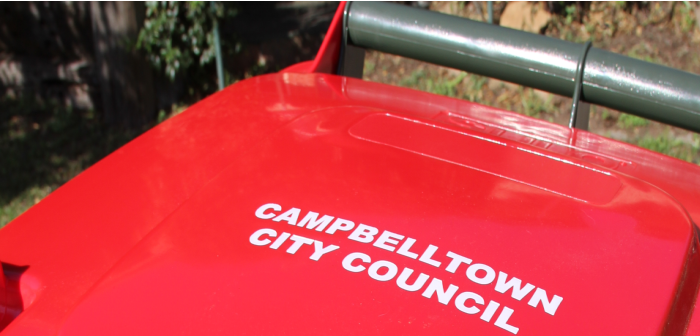
Your general waste bin has a red lid and is emptied every week.
As a general rule, this bin is for rubbish that can't go in either your recycling or garden organics bins, like food scraps, nappies and plastic bags.
If you’re unsure which day your general waste bin is emptied, use our waste collection day search tool to check.
Or download the My Waste Bin app, and you can also set a bin reminder, check what goes in each of your bins, and access a range of waste information at the touch of a button.
What goes in your general waste bin
| Items you can include: | Don't include these items: |
|---|---|
My bin is different from my neighbours!
Our older style general waste bins are a different shape, they are taller and narrower. The newer bins are shorter and wider. Some of our general waste bins also still have a dark green lid. While they look a bit different from each other the bins are all 140L, and hold the same amount of rubbish. Over time we are working to ensure all residents have a red lid to make it easier to know which bin is which.
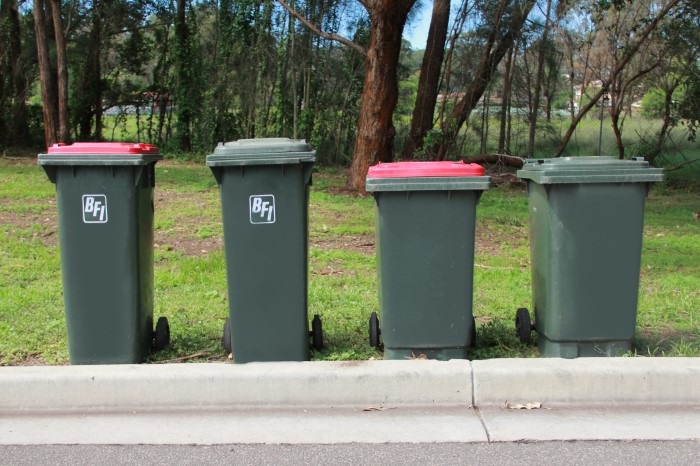
Why is our general waste bin smaller than the recycling and garden organics bin?
All residents are provided with a 140L general waste (red lid) bin, which is collected weekly. We understand at times this may not be enough space, however on average the bin size is adequate for most people. Most councils across NSW offer this bin size, and in some cases, even smaller as the standard bin for general waste. Find out more if you think you need more bin space.
What if my bin is missed or damaged?
- Report a missed bin service, Report a damaged bin and Report a stolen bin online
To reduce the risk of your bins being stolen or damaged, please put your bins out no earlier than the day before your collection day, and bring them back in as soon as you can after they’ve been emptied.
Make sure your bins get emptied every time by putting the right things in your bins and following these tips.
Garden organics bin
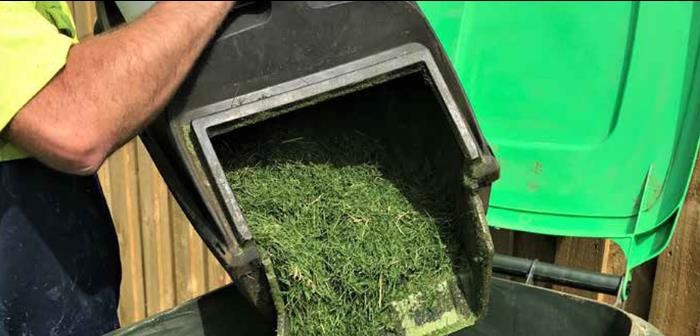
Your garden organics bin has a green lid and is emptied every second week (on the opposite week to your recycling bin).
If you’re unsure which week your garden organics bin is emptied, use our waste collection day search tool to check.
Or download the My Waste Bin app, and you can also set a bin reminder, check what goes in each of your bins, and access a range of waste information at the touch of a button.
Make sure your bins get emptied every time by putting the right things in your bins and following these tips.
What goes in your garden organics bin
| Items you can include: | Don't include these items: |
|---|---|
I don't have a lime green lid on any of my bins
Some of our older organics bins have a dark green lid, the same as the body.
If you have our older bins the best way to know which one is your organics it to check the size:
- The organics bin is a 240L bin, the same size as your yellow lid recycling bin.
- Both your recycling (yellow lid) and garden organics (lime green or dark green lid) are bigger than your general waste bin.
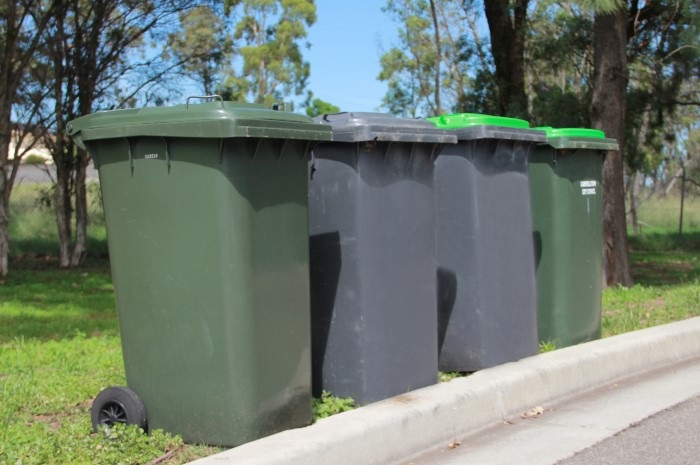
Use your garden organics bin properly
Did you know that when you place your garden prunings, grass clippings, flowers, leaves and bark, small branches and weeds into your green lidded bin it goes to a local organics facility where it is made into compost?
- The compost is then sold for use on farms and in gardens again.
- This service forms part of what is called a circular economy, where the organics are composted and returned back to the farm or garden, providing vital nutrients for the plants to re-use and support their growth.
- This process removes the need for chemical based fertilisers and removes our garden organics from landfill.
Putting the wrong things in your garden organics bin (contamination) causes valuable garden organics to be sent to landfill instead, where it breaks down and creates methane.
That's why it's so important to bin it properly - it makes a wheelie big difference.
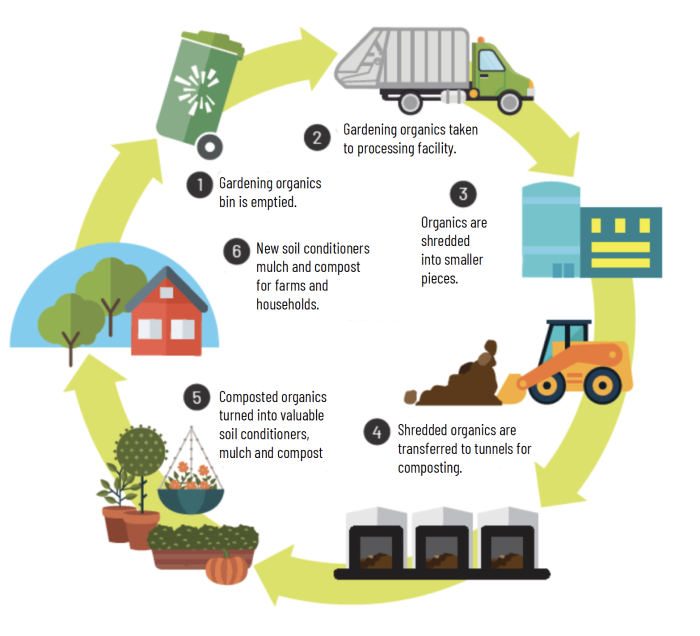
Recycling bin
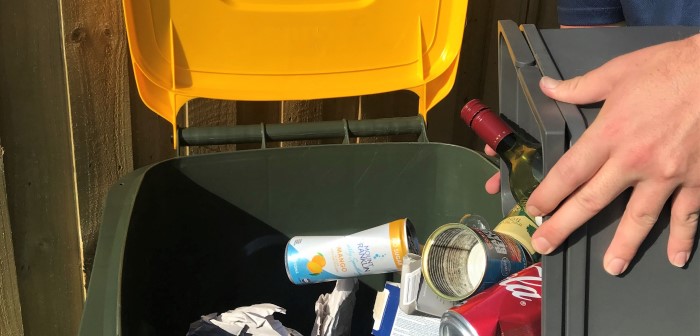
Your recycling bin has a yellow lid and is emptied every second week (on the opposite week to your garden organics bin).
If you’re unsure which week your recycling bin is emptied, use our waste collection day search tool to check.
Or download the My Waste Bin app, and you can also set a bin reminder, check what goes in each of your bins, and access a range of waste information at the touch of a button.
(show below)
Why are our yellow lid recycling bins emptied fortnightly and not weekly?
Our recycling is collected fortnightly. If you have a big family and need a second bin, you can arrange this by contacting us. See our fees and charges page for more information.
I have lots of cardboard boxes - how do I get rid of them?
When we move or buy new furniture we can end up with lots of extra cardboard and cardboard boxes.
- Remember to flatten cardboard boxes before you put them in your recycling bin to save space.
- You might also need to cut up large boxes so they fit, and don't get stuck in the bin when it's being emptied.
You can also drop off bulk cardboard at our Community Recycling Centre.
What does the plastic number in the triangle mean and which ones can go in my yellow lid recycling bin?
The triangle symbol with numbers 1 to 7 (Plastic Identification Codes) are used to represent the type of plastic the item is made of.
- This does not mean the item is recyclable, or accepted in the yellow lid recycling bin
- Not all plastics are accepted in the yellow lid recycling bin due to the type of plastic and also its format (what it has been made into)
- The only plastics that can be placed in the yellow lid bin are bottles and containers from your kitchen, bathroom, and laundry that have the plastic identification code on them.
Plastic identification code
Following are some common items that are accepted in the yellow lidded bin and their plastic identification code:
- 1 PET -water, soft drink and sport drink bottles and peanut butter jars
- 2 HDPE – milk and juice bottles, detergent, shampoo and conditioner bottles
- 3 PVC – clear cordial and juice bottles
- 5 PP – ice cream containers and lids, yoghurt, margarine and butter containers, juice bottles and take away containers
Please remember to keep your recycling loose
Recycling placed inside plastic bags or boxes cannot be separated and ends up in landfill. Don't waste your effort!
Also follow the Australasian Recycling Label on the product. It tells you how to dispose of all parts of the packaging.
Why is it only glass bottles and jars, and not other types of glass that are accepted in the yellow lid recycling bin and not other types?
Not all glass is the same
Green, brown and clear glass bottles and jars are accepted in the yellow lid recycling bin. Remove lids, caps and give them a quick rinse before popping them in your yellow lid bin.
Window, windscreen, drinking glasses, mirrors, glass containers (eg pyrex) and light globes are not suitable for recycling. This wide range of items is made from a different grade of glass that melts at a higher temperature, so when it gets mixed with the glass jars and bottles can cause defects in new glass bottles and jars when made from recycled material.
It is important to also not include china, ceramics or stones with glass bottles and jars.
Please place your bottles and jars in whole (don’t smash them)
While some will break in transit the pieces are generally larger, which helps with the recycling process. When smashed too small the items do not always make it through the sorting process.
Hints and tips for your yellow lid recycling bin
- Keep it clean -rinse containers and remove all food and liquids. Containers with food or liquid in them are considered contaminated and cannot be recycled.
- Keep it loose - drop your recyclables in your recycling bin loose. Please don't bag or box your recyclables first, as this prevents items from being separated and recycled.
- Look for the recycling label - the Australasian Recycling Label is a proven system developed by Planet Ark that tells you which bin each piece of packaging goes in.
- If in doubt - if you have items you are not sure about, please leave them out of the yellow lid bin. Putting items in your recycling bin because you hope they can be recycled will only ruin your good recycling efforts.
Australasian Recycling Label
The Australasian Recycling Label is found on many products you buy in the supermarket. This label tells you how to dispose of all parts of the packaging.
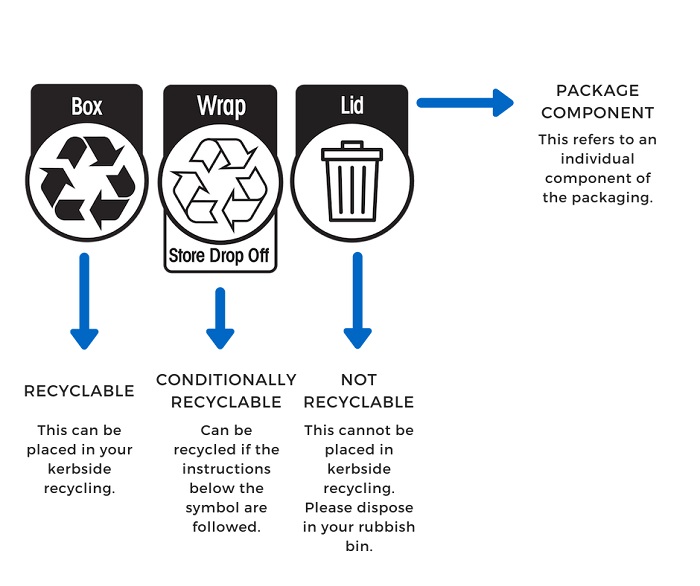
What happens to my recycling?
Once your recyclables are collected from the kerbside the items are taken to the Material Recovery Facility in Spring Farm where they are sorted and baled into different material types (paper, cardboard, steel, aluminium, glass and plastics).
Veolia, the waste company that owns the Spring Farm facility, then on-sells these items to buyers around Australia and overseas for reprocessing into new products.
When there is too much contamination the items are harder to sell (no one wants to buy dirty product), and are landfilled instead. That’s why it’s so important to make sure that only the right things go into your yellow lid recycling bin – check what is accepted and follow the Australasian Recycling Label when placing your items in the yellow lid bin.
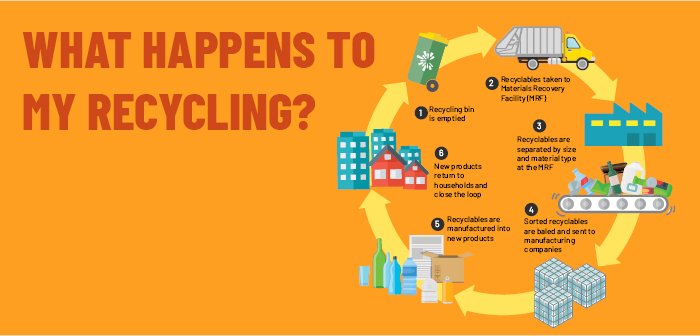
What goes in your recycling bin
| Items you can include: | Don't include these items: |
|---|---|
|
|

